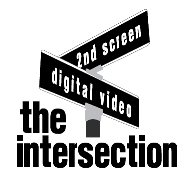As I pondered this seemingly simple challenge, I though back to the end of May when I wrote a blog about the current state of digital title availability in the various service offerings (rental, sell-thru, subscription) and retailers (iTunes, Vudu, Netflix) and compared them to each other and to their physical counterparts. So, with the help of some colleagues, I set out to get to the bottom of the details.
We started with the current TV Guide Top 20 (as of August, 2012). I realize that the Top 20 would have been different in May and will be different in October once the season is underway, but this is a unique time of the year where even the most protected of shows has finally exited their Spring window and have been pushed out on DVD or at least a digital purchase service (if not a streaming one--rental by the episode is no longer supported by any site).
What were the results? Surprising to say the least. First, let me give you an idea of the list (since it is relatively short):
Now with this list, you would have thought there would be a high probability to have nearly all but the HBO and AMC series available already. The results?
- iTunes carries 75% of the content (in SD) for purchase (most recent season)--Vudu and Amazon were just a step behind them. The missing items were all some sort of reality show.
- Netflix has a (not surprising) poor showing for current seasons (strong for past seasons) with only 15% available, but to my surprise, HuluPlus only came in at 40% (disappointing in a big way). Combining the two options only yielded 45% availability.
- Physical still trumped all of the options with 80% of them available for purchase from Amazon and 75% for physical rental from Netflix.
- Combining digital purchase and streaming (across all services) yielded a 90% availability (with only X Factor and So You Think You Can Dance absent)--yielding a problem discussed in my blog last week of finding content across multiple sources.
So, unlike the Top 100 movie title availability, digital can be a better option (across many services), but is no where near the option most of us believe it is (by having a single subscription service). The good news on the movie front is that UltraViolet has continued to make progress since May and the title availability in the Top 100 is now about 50%, with a marked improvement of titles in the "SD" digital format (probably due to Wal-Mart's exchange program).
So, if we want to capture the consumer, the lesson remains for the movie side of the business--get the majority of titles available in the system. But for the TV side of the digital video world, we need to either simplify the consumer offering or make it easier for the consumer to navigate across the various services to find the source of the content they desire.
See you in London on Wednesday.
@ChuckParkerTech


No comments:
Post a Comment
Note: Only a member of this blog may post a comment.